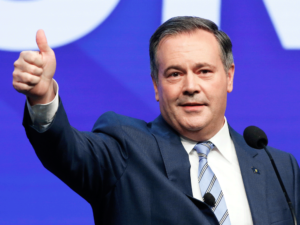Politics
During 2021 Alberta’s political oxygen was consumed almost entirely with COVID-19- a topic Abpolecon.ca kept in the background. The third, fourth (Delta) and fifth (Omicron) waves rolled over the province and Kenney’s government was consistently found wanting. Not only was 2021 defined by the premier’s mishandling of COVID – the “best summer ever” but the NDP consistently out fund-raised the UCP. On top of these failures was a sexual harassment suit, an ill-timed UCP Christmas reception, and 22 constituency associations demanding the leadership review be bumped up to March (the effort was denied by the party Executive). By September Kenney was regarded as a “dead man walking.” In December, former Wildrose leader and UCP leadership contestant Brian Jean resurfaced as UCP candidate for a Fort McMurray seat. He has directly challenged Premier Kenney calling for Kenney to resign. Kenney’s various machinations to control outcomes at the November UCP convention also raised eyebrows from media commentators and party members.

Things did begin to turn around for Kenney in October. Kenney’s mojo was restored courtesy of international oil markets which saw WTI reach multi-year highs of over U.S. $80 and natural gas prices over U.S. $5 per MMBTU. In October a slew of investment announcements came including Dow Chemicals, Amazon Web Services, and a petrochemical development in Grande Prairie. And, at the end of November, Finance Minister Toews was positively giddy when announcing that 2021-22’s deficit was expected to decrease by more than half due in large part to the resource royalty windfall and five bitumen projects reaching pay-off. You could almost say “the plan” was working.
In addition, a couple 2019 election platform pledges were ticked off. The Allan report was finally released- its findings surprising no one, namely that foreign funded campaigns helped defeat major Alberta energy infrastructure projects. Allan however discovered that environmental NGOs were much more capable than energy associations, the Alberta government and the risible Canadian Energy Centre in gaining the public’s trust and attention.
PWC Report on Alberta Provincial Policing
And at the end of October Kaycee Madu, the justice minister released a report prepared by PricewaterhouseCoopers LLP on the concept of an Alberta Provincial Police force.

The findings were met with misgivings from rural politicians who seemed more concerned about budget matters than provincial politicians. According to an October 29 news report in the Edmonton Journal, “Paul McLauchlin, the president of the Rural Municipalities of Alberta (RMA), said Friday while the RMA had not yet been able to digest the report, rural Albertans are more concerned about how crime relates to the justice system, social safety nets, poverty and addictions issues. McLauchlin said he’s not hearing about a need for an Alberta provincial police force from the people he represents.”
At Madu’s press conference Madu stressed that the proposal is not a “done deal,” noting that further consultations will be held. He also emphasized that a “made in Alberta police service” would allow for more local input into policing decisions. Most of the questions directed at the minister related to how the province would make up roughly $200-nillion in federal subsidies. Madu reverted to claiming that “on an apples to apples” comparison with the province running the program, the result would be more “cost effective” than the current set up. He also said that municipalities would not pay more under current arrangements. He also repeated the proposal that this would cause taxes to increase.
PWC Report Highlights
The study was carried out in five phases: 1) Envisioning a fit for Alberta Police Service; 2) Current state assessment; 3) Define the future model; 4) Development of transition roadmap; 5) Set the foundation. Under the current arrangement with the federal government- the Provincial Policing Service Agreement- Alberta is charged only 70 per cent of the cost with the federal government paying the remaining 30 per cent which would be about $234-million. It is a bit more complicated since each municipality with population over 15,000 is charged 90 per cent with 70 per cent charged for municipalities under 15,000 in population. In the case of First Nations, under the First nations Policing Program, Alberta pays 48 per cent of the total costs with the federal government subsidizing the remainder. In fiscal 2019-20, total RCMP costs in Alberta were $672-million with municipalities contributing approximately $176-million, the province $318-million and the federal government about $176-million. Seventy per cent of costs are for human resources with the remaining costs for service vehicles, real estate, maintenance, utilities and furnishings etc. (p. 8) The core of the report is the cost-benefits section- that is “do the higher costs of the APPS model outweigh the benefits or vice versa?” The different models used (A and B, p. 77) assume various cost savings from the “current model” which is estimated at $783 million. The difference from the current model is attributed to “RCMP salary normalization- an extra $70-million and $41-million for upgrading the salaries of Alberta sheriffs (p. 80). PWC says “the actual savings in costs will be determined by the final resource mix of APPS which should be determined with input from local stakeholders.” The transition costs are estimated to be $366t-million to be incurred over a 6-year period. On page 96 of the Report is a financial transition roadmap which totals $366-million. These costs include: $35.1-million for a transition office; $95.5-million for real estate; $115.8-million in “transition period RCMP cost.” No where on the sheet is listed the roughly $175-200-million in federal subsidies the province would forego. This is why the rural municipalities are naturally concerned. |
Economy
Alberta’s economy was on track to lead the country in 2021- a key message Kenney and Toews promoted while avoiding mention that Alberta had a deeper economic hole to climb out in 2020. Alberta’s total employment level has still yet to achieve the pre-pandemic levels. Business groups remain unhappy at the provincial government for their erratic handling of COVID-19 health restrictions and economic support programs.
Abpolecon.ca focussed on a number of the GOA has embarked on a hydrogen strategy which is aimed at utilizing existing pipeline infrastructure – a carbon trunkline to develop Alberta’s hydrogen’s massive potential.
What’s in Store for 2022?

A key issue for the Alberta during 2022 will be the federal budget and will it include subsidies for carbon capture. In December an open letter from Academics to Chrystia Freeland, Deputy Prime Minister & Minister of Finance urged the federal government not to introduce the proposed investment tax credit for carbon capture and storage. The letter states in part:
Carbon capture for the oil and gas sector is not a climate solution. At best, it prevents some carbon dioxide from polluting facilities from reaching the atmosphere, but it is not a negative emissions technology. Despite the billions of taxpayer dollars spent by governments globally on CCUS, the technology has not made a dent in CO2 emissions. Nor is it anticipated to expand to the scale needed: for this reason, the Intergovernmental Panel on Climate Change (IPCC) points to uncertainty in the future deployment of CCUS and cautions against reliance on the technology.
How this issue is settled will be a defining issue for the federal Liberals. The NDP may not support this measure and some Liberals for that matter. However, the Conservatives will likely support the measure. The question becomes how the whole budget could be passed (a matter of confidence) if the Conservatives want to go to shore up Liberal budget measures which will contain more spending than the Tories would like.

The UCP leadership review in April will be crucial for the province. If Kenney wins in a delegate- only vote, he will be criticized for not opening the review to all party members. If this happens look for a breakaway party led by Brian jean. Should a split occur this clearly works in favour of the New Democrats who have been polliing40 per cent lead producing an outcome similar to 2015. If a leadership vote goes against Kenney, it may be that Kenney decides not to run. If Kenney is replaced by Jean or Danielle Smith the May 2023 election is still Notley’s to lose.

Another issue is the overarching issue of climate change. With flames burning through Boulder County in Colorado, climate change will figure prominently in both political and investment decisions in 2022. COVID will continue to hang on into 2022 but the endemic nature of the virus may become less politically polarized.
Best wishes to all for a safe and healthy new year!
Bob Ascah